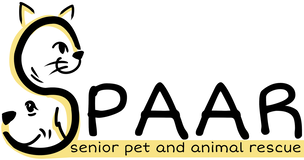Introducing a new pet, at any age, takes time, patience, and love. When bringing a newly adopted pet into your home, a few simple steps will make the transition easier, for both owners and animals. Animal trainer Lacey Grundler answers some frequently asked questions on the subject.
How would you suggest a family prepare for their new senior adoption?
Discuss with family members and others you know will be involved with the animal's care and decide who will be responsible for what aspects of that care. All animals thrive on consistency in their daily schedule. Consistency will not only benefit the transition of all animals involved, but also your friends and family. This consistency needs to begin even before the animal becomes a permanent part of your home.
What kind of items should be discussed?
Prepare a plan. Ask questions. Will your dog be crated when you are away? When and where will mealtime happen? Who will walk the dog? Will your dog sleep in bed with you or have its own bed? Is kitty allowed on the kitchen counter tops? Where will you place a litterbox? These are some general questions and situations that need to be addressed before your newly adopted pet comes home.
How do I bring a new animal into my home with the least amount of stress?
For a dog, walk it through your home and outside on a leash. Allow the dog to sniff and discover the new surroundings. Show the dog where to go to the bathroom. Show the dog its sleeping area and where the toys are kept.
When bringing a new cat home, it's best to place the cat in a room alone, instead of letting it immediately roam free. Cats usually take some extra time adjusting to new environments in comparison to dogs and can also become overwhelmed much more easily. Show the cat where all litter boxes are located and where the food and water is placed.
How do I introduce a newly adopted pet to my resident pet?
When introducing a newly adopted pet to a pet that is already living in your home, there are a few steps to help the greeting to go smoothly. First make sure all other animals are placed in a location where they cannot run up to the new pet immediately.
To introduce a new cat to a resident cat, allow them to initially greet each other by sniffing and communicating through a closed door. Cats can sometimes be territorial when a new cat or dog enters the home. This approach allows the kitties to get to know one another before being physically introduced and can often reduce stress and negative territorial behaviors, often triggered by the stress of the situation. When all cats appear calm - sometimes it may take a few days - open the door and supervise their physical greeting. If either animal appears overly stressed, remove them from each other, give them more time, and try again once they have calmed down.
For dogs, it is best to introduce them to each other in a neutral area. Please note that there should always be an introduction before any adoption occurs, which should be supervised by an experienced rescue or shelter staff or appropriately trained volunteer. Some examples of neutral areas include the sidewalk in front of your home, at a friend’s house, or going for a short walk. Constantly supervise their interactions for several weeks. It is typically a good idea to separate them when you are unable to supervise them.
What are the signs of stress to be aware of?
Being aware of what your pet is trying to tell you is critical, especially when introducing a new pet into the home. Many signs are obvious, such as loose stools. However many more are not, and unless you have a trained eye to see signs of stress and anxiety, oftentimes they go missed.
Dogs communicate with humans and other animals mostly through body language. Common examples of stress in a dog are: panting heavily, drooling, hiding, "hunkering down" to make itself appear smaller, avoiding eye contact, and making direct eye contact if they are pushed past its threshold and feel threatened.
If a cat is stressed, the common signs they will display often include: hiding, panting, hissing, avoiding interaction with people and other animals, growling, not eating or drinking normally, going to the bathroom outside of the litter box, dilated pupils, avoiding eye contact, swatting at whomever tries to interact with it, puffing up its hair to appear intimidating to whatever is causing the stress or anxiety, and sometimes even scratching and biting.
Showing these signs (with exceptions to biting or injuring a person or another animal, in most situations) is healthy. Be open to learn what triggers stress in your pet, and act accordingly to help reduce the anxiety. There are many techniques that can help reduce stress and anxiety. Contact a qualified trainer or behaviorist to understand any situation that concerns you.
Any suggestions for strengthening the bond of a newly adopted dog with me?
Starting a basic obedience training class, no matter how old, not only helps to develop a polite dog, but also has many benefits of creating a bond between the two of you. These classes allow you and the dog to communicate and understand each other’s wants, needs and emotions. As with any new situation, take it slow and be patient, as it can be pretty stressful adjusting to a new life!

 RSS Feed
RSS Feed